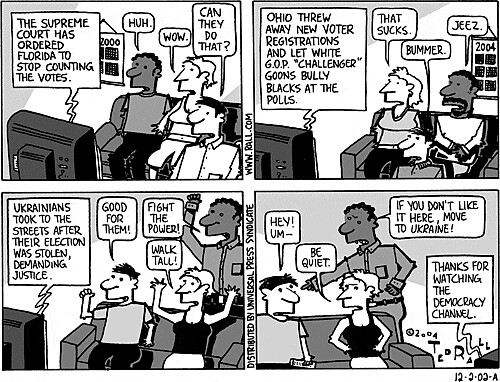Beyond Zuccotti Park: book and exhibit (through (9/22/2012, New York City)
New Village Press, an initiative of the organization Architects/Designers/Planners for Social Responsibility, has just published the book Beyond Zuccotti Park: Freedom of Assembly and the Occupation of Public Space, which is a collection of chapters about various issues touched off by the Occupy Wall Street movement, particularly in New York City and the occupation of and eventual removal of protestors from Zuccotti Park, a "privately owned public space" in the vicinity of Wall Street.
I intended to read the book last week when I was on vacation and I didn't get through enough of the book (it's about 400 pages) to be able to do a full-scale review as of yet.
Suffice it to say that the book is an important contribution to the literature in terms of public assembly, First Amendment, and public space issues.
It's important to call attention to the book now, because for people in the New York City region, there is a companion exhibit at the AIA Center for Architecture, that runs through September 22nd.
On Sunday September 16th there will be a panel discussion at the Center, Freedom of Assembly: Public Space Today, featuring a number of the chapter authors as presenters. It's the third presentation of a series on the subject.
----
With regard to the book, I have to say there is a lot to think about through points raised in the various chapters. It's sparked more thinking by me in terms of planning for public space and spaces for contestation and rules and regulations for demonstrations as opposed to other kinds of uses and events in the public space.
A demonstration or protest isn't the same as a street festival, and deserves a higher level of protection in terms of public expression. Typical rules for street festivals aren't relevant to and shouldn't be enforced against protests.
(While I might not agree to the extent of how law was interpreted, in NYC local judges have ruled that the sale of books is a first amendment right, and so NYC's regular vending laws in terms of licensing and other provisions are held to not fully apply--book sales rules are different. I think the same type of treatment needs to be applied to demonstrations and protests for certain rules and regulations, such as amplification. See "The regulation of street vendors" testimony from the New York Civil Liberties Union and the "Street Vending" fact sheet from the City of New York.)
For example, I was derisive of the "public telephone" aspect of the demonstration in Zuccotti Park, where people didn't speak continuously, but spoke a sentence or two, which was repeated by people in the audience so everyone could hear what was being said.
The reality is that the City Government in New York City denied the protestors a permit for amplification.
To me that is a huge violation of freedom of assembly protections in the First Amendment.
My review of the book will extend some of the ideas discussed in "Community cleanups and other activities as community building and civic engagement activities," which is somewhat misnamed as it discusses various types of spaces that support community building and the right to challenge government inherent within the governed, "Ground up (guerrilla) art #2: community halls and music (among other things)," and "The layering effect: how the building blocks of an integrated public realm set the stage for community building and Silver Spring, Maryland as an example."

NYPD Police Bus, OWS Occupy Wall Street Movement, Zuccotti Park, New York City by jag9889, on Flickr.

Ted Rall editorial cartoon, 12/2/2004
Labels: civic engagement, freedom of assembly/First Amendment, law and the legal process, participatory democracy and empowered participation, protest and advocacy, urban design/placemaking




0 Comments:
Post a Comment
<< Home